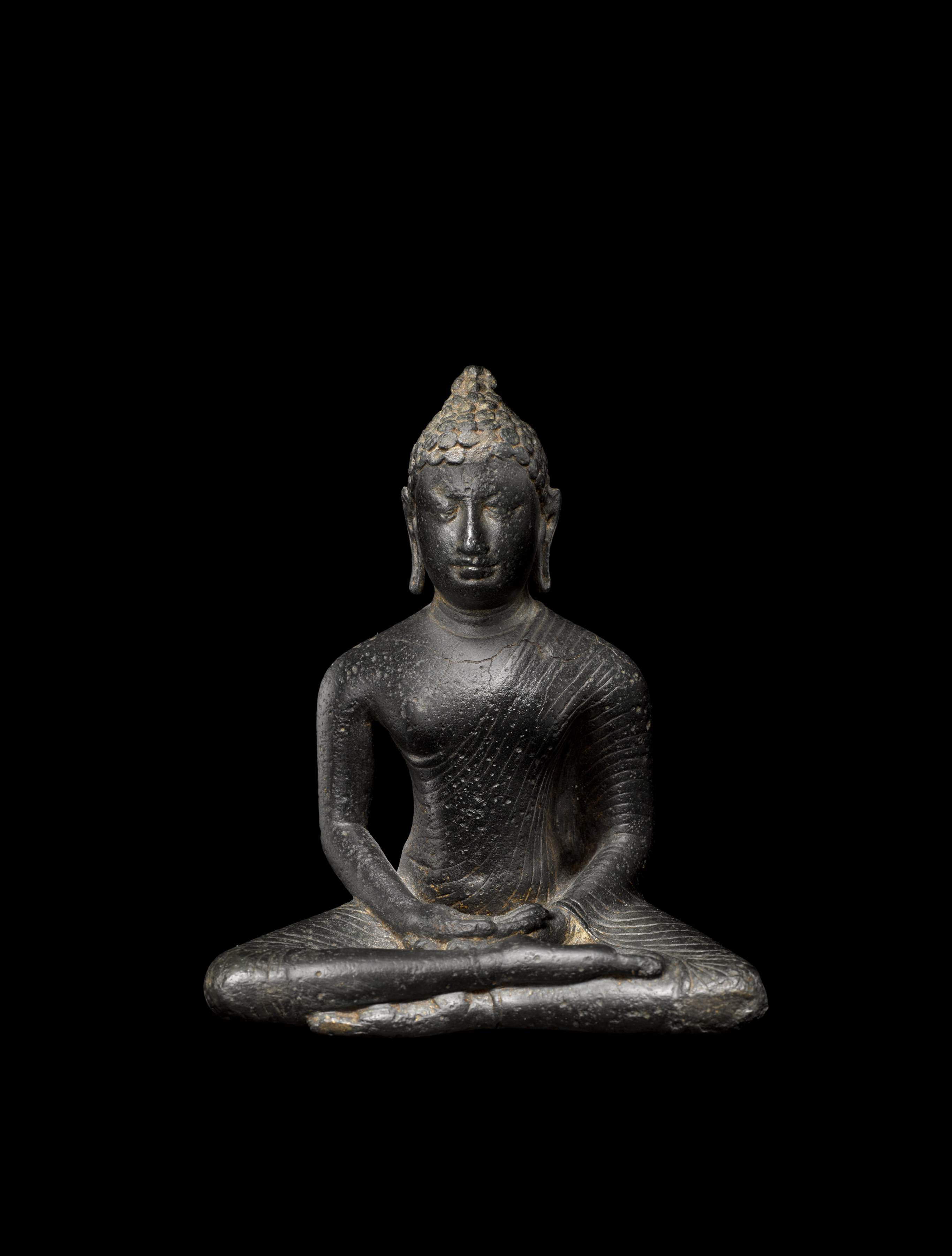
Provenance:
Spink & Son Ltd, London
The Kronos Collections, acquired in the early 1980s
Published:
Martin Lerner, The Flame and the Lotus, Indian and Southeast Asian Art from The Kronos Collections, Metropolitan Museum of Art exhibition catalogue, New York, 1984, no. 13, cover illus.
Ulrich von Schroeder, Buddhist Sculptures of Sri Lanka, Hong Kong, 1990, pp. 188-189, no. 46E
Exhibited:
“The Flame and the Lotus,” The Metropolitan Museum of Art, New York, September 20, 1984-March 3, 1985
The Anuradhapura period (ca. 3rd century B.C.E.–10th century C.E.) represents the earliest and most enduring phase of Sinhalese Buddhist art, flourishing under royal patronage following the introduction of Buddhism to the island during the reign of King Devanampiya Tissa. The capital city of Anuradhapura became a great center of Buddhist learning and artistic production. Bronze sculpture from this era, though comparatively rare, is distinguished by its classical serenity, subtle modeling, and technical finesse—qualities that link it to early Indian prototypes while expressing an unmistakably Sri Lankan sensitivity and restraint.
This small bronze Buddha is depicted seated in the half-lotus posture (virasana), with the right leg placed over the left. His hands rest in his lap in the gesture of meditation (dhyanamudra). The monastic robe is arranged to leave the right shoulder bare, its folds delineated by precisely-incised lines. The neck bears the trivali, the three auspicious folds symbolizing beauty and perfection, while the hair, rendered in neat spiral curls, rises over a prominent ushnisha, the cranial protuberance signifying transcendent wisdom.
The sculpture’s harmonious integration of fluid volumes and refined proportions reveals exceptional mastery. The chest swells gracefully toward the broad yet gently-sloping shoulders, and the widely-spread knees create an impression of elongated legs that remain in perfect balance with the rest of the body. The Buddha’s serene and impassive expression—neither stern nor inviting—transcends emotion altogether, suggesting the calm detachment of one who has attained a higher state of spiritual awareness.

